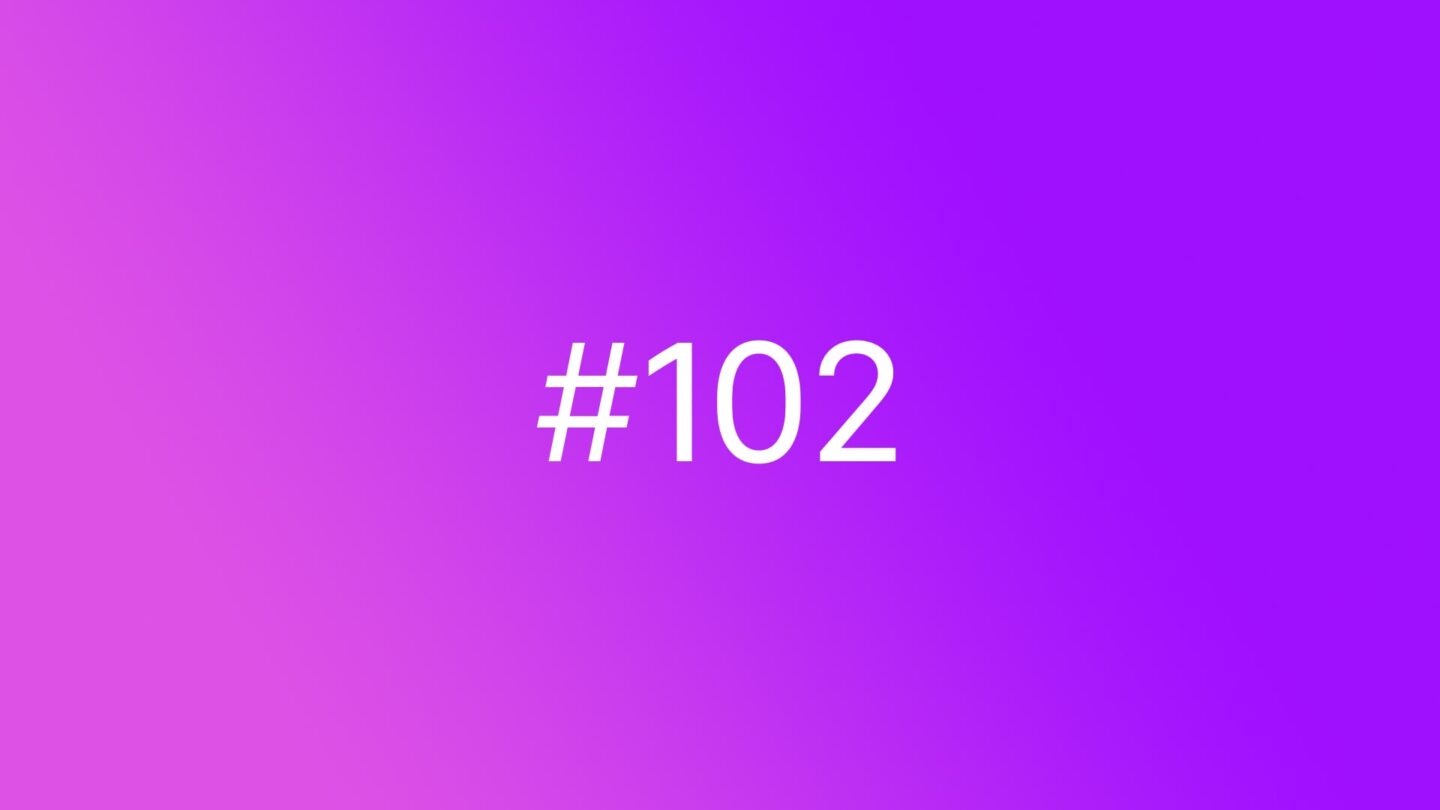🆓 This member post is free for all, thanks to our paying subscribers. Enjoy!
Hi!
How are you? How’s your schedule? Mine is finally calming down, after a horrendous spring, and then an equally taxing start to the summer. The former was due to work, the latter more of a personal nature. I wouldn’t have gotten through any of it if it weren’t for some rigorous planning, scheduling, and being prepared for failures with fallbacks.
A lot of that, in practice, happens in the calendar. I schedule and plan across three tools, which is one too many, but that’s where I am.
- To-do lists are key for me. I use Reminders, not because it’s the best one out there, but thanks to the Siri integration, and support across plenty of apps.
- I plan in my calendar, blocking time to manage my tasks, and to manage meetings and calls, obviously.
- We use Basecamp at Divide & Conquer, so there are some to-dos scattered there too, unfortunately.
Everything that really needs to get done at a certain time ends up in the calendar. Time-blocking isn’t for everyone, or even everything, but to me, it’s the only thing that works when things go sideways. It’s crucial when I’ve got too much on my plate, or when life hits you with something sad.
The consensus among Apple enthusiasts is that Fantastical is the best calendar app out there. It’s great, I like it for plenty of reasons, but I also found that it performed worse than the default app with my numerous Google accounts. You might remember that I switched to the default Calendar app a while back, with the promise that I’d try some other calendar apps as well. That’s what I did, and that’s why I’m writing about Readdle’s Calendars app.
Continue reading →
It’s that time of year, post-WWDC, when we all are waiting for the brand new version of iPadOS. This time, it’s iPadOS 16 that’s coming up, and the developer betas are already out, with a public beta coming along down the line.
Continue reading →
This issue will be a little shorter than usual, but I hope you’ll find it interesting nonetheless. You see, I’ve been wanting to dive deeper into how the iPad works for various professional use-cases. One thing most people will say is that iPadOS is fine for light office work, which sounds about right, doesn’t it? Well, I’m on a mission to try to figure this out, and see where the whole thing falls apart.
Email and documents won’t be such an issue (although I’ve got thoughts on the latter), but when it comes to spreadsheets, the iPad’s screen might not be the best option. Those are the things I’m going to explore, essentially creating an Office Toolkit, consisting of apps and services, for iPad users.
📧 Switch to iPad #101 is free for all to read. Have at it!
🆓 This member post is free for all, thanks to our paying subscribers. Enjoy!
Hi!
First of all, I’d like to thank you all who’ve taken the time to answer the 100th issue survey. Thank you for your input, and your kind words – I’m taking it all to heart, and will act accordingly. And if you haven’t had the time yet, the survey’s still open, so do consider sharing your thoughts. It’s a super short one, and anonymous too.
This issue will be a little shorter than usual, but I hope you’ll find it interesting nonetheless. You see, I’ve been wanting to dive deeper into how the iPad works for various professional use-cases. One thing most people will say is that iPadOS is fine for light office work, which sounds about right, doesn’t it? Well, I’m on a mission to try to figure this out, and see where the whole thing falls apart.
Continue reading →
It’s been widely reported that future iPhones will have to switch to USB-C instead of Lightning, at least in Europe, due to a new European Union legislation. While this is true, and the likely outcome, it’s not only affecting iPhones. The legislation targets tablets as well, which means that the entry-level iPad needs to move from Lightning to USB-C. It’s the last iPad model on sale that isn’t using USB-C, so this shouldn’t be such a big loss for Apple. After all, USB-C is the primary connector for iPads, still.
Continue reading →
Are you as amazed by the number attached to this issue? One hundred is quite a lot. Plenty of words has been written on this computing journey of ours. The newsletter alone is over of 123,000 words over these 100 issues, and that’s not counting things written for the site, or the weekly updates, that’s just proper issues, if you will.
A lot of words, and a lot of thoughts – it’s been a ride, and it’s not over yet.
This week, I’d like to talk about the future of Switch to iPad as a project. But first, I’d ask you to fill out this very brief survey. It would really help me to make several decisions because, as you’ll see further down, I’ve got some thoughts.
📧 Switch to iPad #100 is free to read. Have at it!
Please take the survey, too!
🆓 This member post is free for all, thanks to our paying subscribers. Enjoy!
Hi!
How are you? Are you as amazed by the number attached to this issue? One hundred is quite a lot. Plenty of words has been written on this computing journey of ours. The newsletter alone is over of 123,000 words over these 100 issues, and that’s not counting things written for the site, or the weekly updates, that’s just proper issues, if you will.
A lot of words, and a lot of thoughts – it’s been a ride, and it’s not over yet.
This week, I’d like to talk about the future of Switch to iPad as a project. But first, I’d ask you to fill out this very brief survey. It would really help me to make several decisions because, as you’ll see further down, I’ve got some thoughts.
The survey is anonymous, I’m not tracking anything, so feel free to speak your mind. Thanks in advance.
(Survey closed.)
Continue reading →
The WWDC keynote this Monday showed us what’s in store for iPadOS this fall. One of the new features is Stage Manager, which revamps multitasking on iPadOS, but also brings proper fullscreen support to external monitors. Yeah, you knew I’d write about that, right?
I’m writing this on my M1 12.9” iPad Pro, but I’m not looking at its screen. Instead, I have hooked up to a 27” BenQ display via Thunderbolt, something I rarely do. That’s because you get those pesky black bars on the side, and just a mirrored version of your iPad screen.
Or rather, that’s what it used to be like. You see, I’ve got the developer beta of iPadOS 16 installed, and the main feature there is external monitor support with Stage Manager. I’ve got to tell you, it’s pretty sweet. No, scratch that, it’s bloody brilliant, that’s what it is. At least I think it will be, when the bugs have been ironed out.
Apple announced iPadOS 16 at WWDC this Monday. It’s very much in beta (with improved developer tools), and just for developers at this time. The public beta is due in July, if that’s your thing, with the actual release coming sometime this fall.
So, what’s it like to work on your iPad using Stage Manager?
📧 Switch to iPad #99 requires a paid subscription. It’s $5/month or $50/year.
🆓 This member post is free for all, thanks to our paying subscribers. Enjoy!
Hi!
I’m writing this on my M1 12.9” iPad Pro, but I’m not looking at its screen. Instead, I have hooked up to a 27” BenQ display via Thunderbolt, something I rarely do. That’s because you get those pesky black bars on the side, and just a mirrored version of your iPad screen.
Or rather, that’s what it used to be like. You see, I’ve got the developer beta of iPadOS 16 installed, and the main feature there is external monitor support with Stage Manager. I’ve got to tell you, it’s pretty sweet. No, scratch that, it’s bloody brilliant, that’s what it is. At least I think it will be, when the bugs have been ironed out.
Apple announced iPadOS 16 at WWDC this Monday. It’s very much in beta (with improved developer tools), and just for developers at this time. The public beta is due in July, if that’s your thing, with the actual release coming sometime this fall.
So, what’s it like to work on your iPad using Stage Manager?
Continue reading →
WordPress, the world’s largest content management system by far, has a pretty rocky history when it comes to third-party apps publishing to sites. This is because of XML-RPC, the communication method used, and how it is prone to attacks. Luckily, development moves forward, and WordPress has had a REST API for quite some time now.
Apps, however, haven’t always caught up. Ulysses, the popular writing app, was one of those. I wrote a whole issue about how you could publish your blog posts using Ulysses, and for many, that was the case. For me, and for Switch to iPad, it soon stopped working because of XML-RPC and how attackers tried to brute-force the site.
Continue reading →











